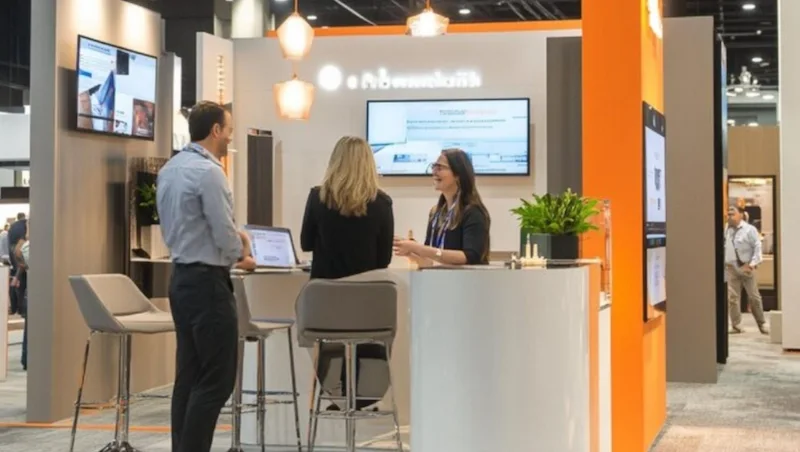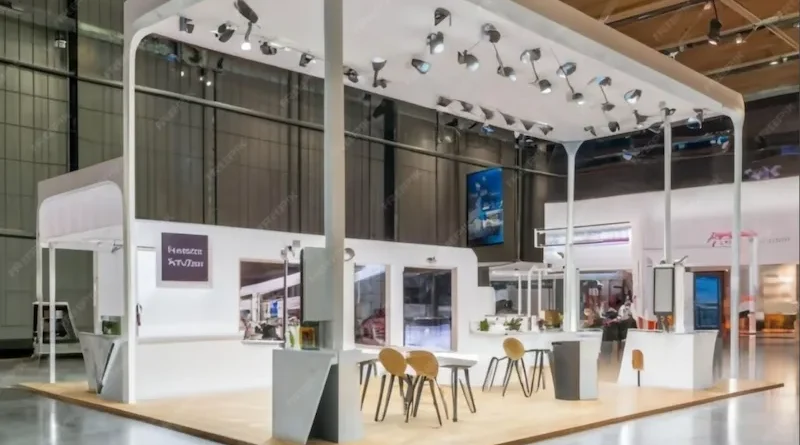Beyond the Booth: Unveiling the Hottest Designs and Sustainable Practices for Your Next Convention
Trade shows are evolving into exciting environments in which brands are telling unique stories about their innovation and design. As audiences demand a more immersive experience and greater consideration toward sustainability, the trade show landscape is evolving away from a simple approach of setting up a display in a blank space to a consciousness focused on forward-thinking environmental sustainability and impactful practices. Even with used trade show booths, it’s possible (and becoming essential) for companies to practice design-forward practices and sustainability in their designs, which will amplify their presence and minimize waste. Modern trade shows are less about space and more about creating moments that resonate with what defines an experience today.
Innovative Trends and Sustainable Practices Shaping Exhibitions

Immersive and Interactive Trade Show Exhibits
The time for static displays is rapidly coming to an end, replaced with interactive or experiential designs that engage visitors in a more physical way—touch screens, augmented reality demonstrations, and interactive trade show exhibits allow audiences to be participants instead of just viewers.
Furthermore, soundscapes, lighting effects, and projection mapping can change a booth into an environment that people won’t forget. Research has shown that when you stimulate several senses, people remember experiences much longer. As conventions become more competitive, businesses that use the immersive design approach to stand out will increase the time visitors spend with them and enhance brand recall.
2. Modular and Flexible Designs
Versatility is a main focus in modern booth design. Modular systems allow rapid reconfiguration, allowing for one structure to serve multiple events without having to completely redesign or change it in the future. Panels, walls, and other displays will adjust based on the floor space available for either an open layout or even a more private space to think and discuss.
The versatility of modularity is beneficial to companies that exhibit at events that vary in venue size, providing solutions that cost less and have the least amount of waste. Rather than trashing a modular structure, the components can be reused based on reuse and adaptation. Modular booths offer ways to treat their booth design consistently with a brand across different uses while maintaining the least amount of carbon impact.
3. Sustainable Materials and Eco-Friendly Practices
Sustainability is no longer just a trend—it is now an essential expectation. Attendees at events are more mindful of the environmental impact an event has on the planet. Responding to these expectations, exhibitors can utilize recyclable or renewable materials, such as bamboo, aluminum, and reclaimed wood, to meet them. Additionally, they can employ green printing processes, non-toxic paints, and LED lighting to minimize their impact on the planet.
Even flooring and furniture can support sustainability with carpets from recycled fibers and rental furniture that values multiple lifecycles of use. Exhibitors who showcase green practices demonstrate their commitment to social responsibility, enhancing their brand credibility while minimizing waste. Besides, the repurposing of elements of a used trade show booth ties in perfectly with sustainability, reflecting creativity without requiring something new.
4. Technology Integration for Smarter Engagement
Technology is changing the nature of exhibitor-to-attendee interaction. Touchless check-ins, QR code scanning, and virtual product demonstrations create better efficiency while enhancing visitor experiences. Large digital screens enable companies to change their content in real time and allow exhibitors to display different visual components related to specific audience targets.
Virtual reality (VR) and augmented reality (AR) take the engagement a step further, allowing conference attendees to get a real grasp of product demonstrations without the physical inventory. That could be as simple as a visitor putting on a VR headset that transports them to a factory floor or allows them to see a new service being utilized. This kind of engagement reduces logistical strain and can leave a lasting impression on attendees, which positively reflects on the brand in crowded exhibition halls.
5. Minimalist Aesthetics with Maximum Impact
Instead of the traditional cluttered booth with endless pamphlets and giveaways, there is a strong design trend toward minimalism. Simple lines, neutral colors, and selected visual elements provide a bold, uncluttered message. Minimal booths often make a statement with a visual story via one or two prominent pieces, inclusive of a digital wall or a standout product display, instead of too many experiences.
Minimalism complements sustainability. By minimizing wasteful materials and focusing exclusively on needed design elements, vendors can improve sustainable efforts while providing an engaging space. This trend also appeals to modern design while exuding confidence and emphasizing brand or message clarity.
End Point
The future of trade show design is a balance of creative expression, functionality, and sustainability. Exhibitors are utilizing new technologies, eco-friendly materials, and modular exhibition designs to enhance their design strategies into a creative and memorable experience for attendees. With new or used trade show booths, you can create a memorable experience for every convention. Ultimately, this consideration ensures responsibility stays relevant with changing trends and is sustainable.
Visit the rest of the site for more interesting and useful articles.

